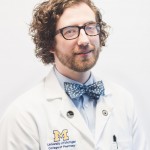 Barbara Resnick, PhD, CRNP
Barbara Resnick, PhD, CRNP
Professor
Sonya Ziporkin Gershowitz Chair in Gerontology
University of Maryland School of Nursing
Remember my recent blog post about being a terrific caregiver and care coach? Here are some more tips based on my professional and personal experience.
Remember, Actions Speak Louder Than Words
You may not be an individual’s primary caregiver or care coach. You may just want to show you care. We all have people in our lives we really care about who have received some type of life-threatening or life-impacting diagnosis. It could be anything from experiencing a hip fracture or a stroke, or a cancer diagnosis requiring treatment or palliative care management (comfort care).
It is hard in these situations to know how to respond and what to do. Personally, I am a big believer in “actions speak louder than words.” It never hurts to reach out to someone you care about who is undergoing treatment or who needs help and support coping with a long-term illness or disability.
Never be afraid to just DO or SAY something. Don’t be afraid to let the person know you heard about their illness and wish them well. Show you care in any and every way. Don’t hesitate because you are afraid you are intruding on the person’s privacy. If you heard about their illness, it is no secret!
Avoid Useless Gestures
Personally, I recommend against saying things like “let me know if I can do anything” or “call me if there is anything I can do.” Essentially, when someone is ill they are not likely to pick up the phone and call for help.
Instead of empty gestures, provide words of encouragement that may have helped you in the past. For example, when I first started my course of radiation and chemotherapy, a colleague sent me a quote that Christopher Robin said to Winnie the Pooh: “Promise me you’ll always remember that you are braver than you believe, stronger than you seem, and smarter than you think.” I put this on my desktop and read it daily to help me through my own challenging treatment. Continue reading





